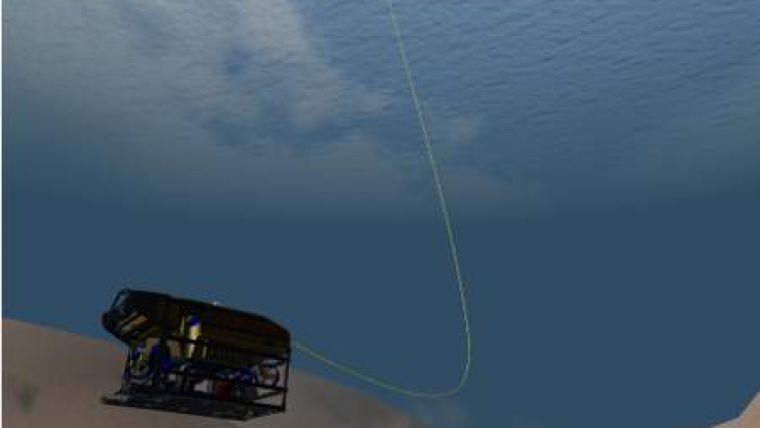Simulator Models Complex Sea Currents
Fugro Subsea Services is a manufacturer and operator of ROVs, and provider of subsea engineering, construction support and inspection, maintenance and repair services. Its Robotic Technologies business line has announced the introduction of three-dimensional sea current profiles to its DeepWorks family of subsea simulators.
Users can model currents as they vary with depth and location, enabling more realistic representations of current flows across large sea areas, in shallow waters and around targets. Complex current profiles can be quickly configured to better understand the physical effects on objects like the ROV tether as it moves through different current fields.
An user-interface allows the operator to define the strength, heading and elevation of currents, at different geographic coordinates and depths as a series of current profiles in a simulation. Once set up, the user can readily modify values as required over the duration of the mission being simulated.
Each current is defined as a 3D vector and a set of these vectors defines a complex current profile from the sea surface to the seabed. Full horizontal and vertical interpolation is supported, which allows the current's strength and true direction to be calculated and monitored at any point in the current field.
This allows the operator to predict the effects of currents during a cable-lay operation, for example, to determine how far the vessel heading must be offset from the trench to compensate for the effects of the current. In deeper water fields, complex current profiles make it difficult, unaided, to predict cable touchdown accurately. DeepWorks enables different current settings to be tried in various scenarios, to determine the safe operating envelope and helps to validate procedures for optimal payout speed and vessel navigation.
Modelled currents give more realistic environmental conditions for training ROV pilots in station-keeping, navigation and performing intervention operations involving moveable bodies, or working in close proximity to targets for detailed inspections.
Accurate knowledge of current behaviour also provides dive teams with a better understanding of the safety constraints for payout and management of the diver's umbilical cable to avoid hazards.
3D sea current modelling is an important step forward in extending the boundaries of safety and efficiency in subsea operations. 3D sea current profiles is available now with new orders for DeepWorks and as an upgrade to existing installations.
Image: Strong currents make piloting FCV3000 ROV more challenging when monitoring a pipe lay operation.

Value staying current with hydrography?
Stay on the map with our expertly curated newsletters.
We provide educational insights, industry updates, and inspiring stories from the world of hydrography to help you learn, grow, and navigate your field with confidence. Don't miss out - subscribe today and ensure you're always informed, educated, and inspired by the latest in hydrographic technology and research.
Choose your newsletter(s)
























